Healthy You
Your guide to living well







Healthy You is an award-winning magazine featuring health and wellness articles and promoting practical tools that support and encourage healthier choices.
This educational resource for UMR members is published four times a year as part of our member online services and can be viewed, downloaded and shared digitally.
Healthy You is packed with helpful resources and practical recommendations to address the most common health topics, including:
• Building healthy habits
• Preventive care recommendations
• Chronic health conditions
• Exercise tips
• Nutrition and recipes
• Stress and mental health management
• First aid and getting care
• Health literacy
• Spanish-language resources

While using this electronic publication, you may click on a link to other websites. We provide links to other websites that may contain information that may be useful or interesting to you. We do not endorse, and are not responsible for, the content and accuracy of linked websites operated by third parties or for any of your dealings with such third parties. You are solely responsible for your dealings with such third parties, and we encourage you to read the terms of use and privacy policies on such third-party websites.
Available features and benefits are dependent on the products and features included in the plan design. Not all members will have access to all features shown.
Copyright © 2024 United HealthCare Services, Inc.
Reproduction in whole or part is not permitted without permission in writing from UMR. All information and links were accurate and functional at the time of publication. However, because this electronic publication contains links to third-party sites, information can change and become unavailable.

Track all your claims in one place

Check in at your convenience to see if a claim has been processed and what you might owe. You can search the claim activity for everyone on your plan, view your claims cost summary or submit a new claim.
Check out this FREE resource. Sign in to your member account on umr.com.
Welcome to a smarter, simpler, faster way to manage your health care benefits, right from the palm of your hand.
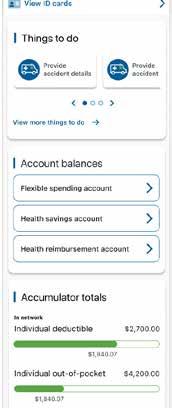

The UMR app has a smart fresh look, simple navigation, and faster access to your health care benefits information. View your plan details on demand – anytime, anywhere.
With a single tap, you can:
• Access your digital ID card
• See a personalized list of Things to do to stay on top of your health and keep your benefits up to date
• Look up in-network health care providers
• Find out if there’s a copay for your upcoming appointment
• View your recent medical and dental claims
• Chat, call or message UMR’s member support team

Download the UMR app today!
Simply scan the QR code or visit your app store to get started.


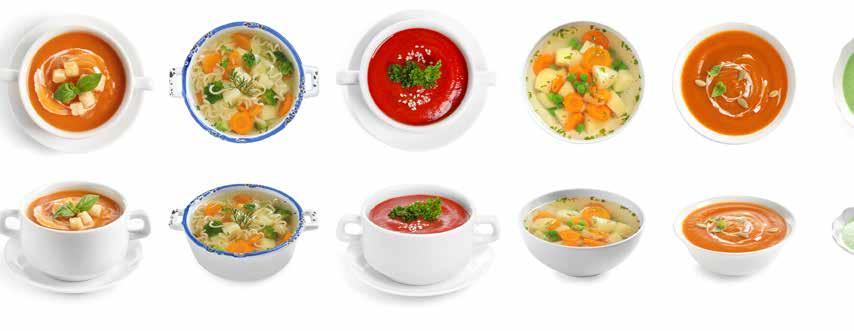


Soups are a nutritious and delicious way to stay healthy this season.


As the leaves turn golden and the air gets crisp, there’s nothing quite like a warm, hearty soup.
Not only are soups a naturally soothing food, but they’re also a great way to add immunity-boosting ingredients to your diet – so you can fight off both the cold weather and the cold and flu season.


They are versatile, easy to prepare and can be made in large batches for convenience. Whether you prefer creamy, brothy, chunky or smooth, there’s something for everyone.

Let’s dive into some key ingredients you can add together for a nourishing meal.
Bone broth: Bone broth is protein-rich and can contain many vitamins and minerals, depending on what ingredients are used (usually vegetables and roasted bones with or without meat attached). It contains collagen, which supports gut health and reduces inflammation.
Beans: These small but mighty vegetables are packed with fiber, amino acids and nutrients. These help good bacteria grow in your gut, which can improve your immune system and reduce inflammation.
Carrots: High in beta-carotene, carrots are great for enhancing immunity. Beta-carotene is converted into vitamin A in the body, which is vital for maintaining overall health.
Citrus fruits: While not a typical soup ingredient, a squeeze of lemon or lime juice can add a burst of vitamin C and a little extra tang.








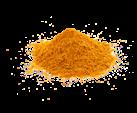
Garlic: This pungent bulb is a powerful immunity booster. It’s packed with compounds like allicin, which has antiviral and antibacterial properties. Adding a few cloves of garlic to your soup can help ward off colds and flu.
Ginger: Known for its antiinflammatory and antioxidant effects, ginger is great for easing symptoms and strengthening your body’s defense system. A few slices of fresh ginger can add a zesty kick to your soup while keeping viruses at bay.
Leafy greens: Spinach, kale and other leafy greens are loaded with vitamins and minerals, including vitamin C, which is essential for immune function. Toss a handful into your soup toward the end of cooking to retain their nutrients.

Mushrooms: Varieties like shiitake, maitake and rishi contain beta-glucans, which could produce chemicals needed to help your body fight off infections.
Turmeric: This golden spice is renowned for its anti-inflammatory properties, thanks to curcumin, its active compound. Turmeric can help enhance your body’s immune response and can be easily added to soups for a vibrant color and earthy flavor.
Below are a few ways to combine these nutrient-dense foods, but you can mix and match your favorites to best fit your tastes.
Bone broth and vegetable soup: Use a base of bone broth and add a variety of vegetables like carrots, celery and leafy greens. Season with herbs like thyme and rosemary for a comforting and nutrientfilled soup.
Basic chicken noodle soup:
Boil your favorite type of noodles and then add them to a pot with broth or stock, diced chicken, carrots, celery and herbs like rosemary and thyme for a familiar, cozy-season staple.
Garlic and ginger chicken soup: Start with a base of chicken broth, add shredded chicken, sliced garlic, and ginger. Toss in some carrots and finish with a handful of spinach. This soup is both soothing and invigorating.
Lemon chicken orzo soup: Make a classic chicken soup with orzo pasta, carrots, celery and shredded chicken. Finish with a squeeze of fresh lemon juice for a zesty twist and an extra dose of vitamin C.

Mushroom and barley soup: Sauté a mix of different mushrooms with onions and garlic. Add vegetable broth, barley and a splash of soy sauce. This soup is earthy and deeply satisfying.
Navy bean soup: Combine chopped ham, navy beans, celery, onion and carrots in a pot with chicken broth or bouillon. This savory meal is sure to satisfy on chilly nights.
Turmeric lentil soup: Cook lentils in vegetable broth with chopped onions, garlic and a generous amount of turmeric. Add in some diced tomatoes and kale. This soup is hearty, healthy and colorful.
For more healthy recipes, visit MyPlate Kitchen.

Go beyond the basics with these easy ways to make your soups extra flavorful.
Use fresh ingredients:
Fresh, high-quality ingredients will make your soup taste better and are more nutritious.
Season well:
Don’t be afraid to season your soup with herbs and spices. They not only add flavor, but can also have health benefits.
Add richness:
Cook gently:
Simmer your soup gently to allow flavors to meld without overcooking the ingredients.
Batch cook:
Make a big pot of soup and freeze leftovers in individual portions for quick, healthy meals. This also means you can enjoy seasonal produce no matter the



MYTH: ADHD isn’t real. It’s just kids diagnosed for normal behaviors or adults being lazy and not trying hard enough.
FACT: Decades of scientific evidence proves ADHD’s existence. Scientists still debate the nuances of diagnosis. But brain imaging, clinical research and neuroscience confirm ADHD is a developmental impairment of the brain’s self-management system.
Have you ever found it hard to maintain your attention or control your emotions? Everyone feels like this at some point. It’s when you feel this way consistently that it starts to affect your life.
Folks with attention-deficit/hyperactivity disorder (ADHD) show differences in how their brain grows and functions. Their behaviors are inappropriate for their age, to the point where it consistently hinders many areas of their life. In other words, it’s harder for the central part of their brain to start, process and complete other brain functions.
Let’s say the central part of the brain is like the manager of a department. They organize what their employees do, assign tasks and ensure they work well together. This makes the department run smoothly.
The brain performs functions like the manager. If the manager is always disorganized, can’t control their emotions or doesn’t solve problems, the department will struggle. This is what happens in the ADHD mind.
People with ADHD continually work double time to do what comes more easily to others.
Ever wondered what the difference between ADHD and attention-deficit disorder (ADD) is?
In the past, ADD was a separate condition. But current research shows it’s one of three types of ADHD:
1. Predominantly inattentive presentation
Once known as ADD, folks with this presentation can find it difficult to:
• Complete tasks
• Do what they’re told
• Follow conversations
• Pay attention to details
• Remain focused
• Remember details of normal routines
2. Predominantly hyperactiveimpulsive presentation
People with this sub-type can find it challenging to:
• Ask before grabbing
• Avoid accidents and injuries
• Not interrupt
• Speak at appropriate times
• Stay patient
• Sit still
• Wait their turn
3. Combined presentation
This is when a person has symptoms of both inattentive and hyperactive-impulsive sub-types.
People’s symptoms and type of ADHD may change as they grow.
ADHD can include the impaired ability to:
• Adapt to changes
• Allocate time appropriately
• Be careful
• Become and stay organized
• Control impulses
• Get along with others
• Hold still
• Keep track of necessary things
• Listen well or appear to listen at all, even when directly spoken to
• Manage behaviors
• Plan realistically
• Play quietly
• Remain on task
• Regulate and moderate emotions
• Stay out of someone else’s activities
For a full list, use the American Psychiatric Association’s official guidance on mental health conditions, DSM-5.
With many conditions, women and girls are often disregarded or misdiagnosed when they share their symptoms with health care providers. ADHD is no exception.
ADHD is nearly twice as likely to be diagnosed in boys (15%) than girls (8%). Girls and women experience the same symptoms as boys and men, but often they look different.
Many girls who have the inattentive type of ADHD are seen as perfectionists, “ditzy” or shy. Because these traits are not disruptive, girls are usually not referred for a diagnosis. Even when girls show symptoms of the hyperactive sub-type, such as being chatty, their behavior is often viewed as normal.
Females typically feel more overwhelmed by ADHD because they:
• Are more affected by symptoms, like using all their free time to stay organized
• Create more productive coping strategies
• Hide symptoms
• Internalize struggles
• Score higher on anxiety, depression and emotional dysregulation scales
ADHD is diagnosed based on symptoms. So when providers aren’t educated on how ADHD shows up differently for males and females, gender bias or misdiagnosis rises.
Like icebergs, most ADHD signs are hidden under the surface, yet always there. Seek resources, such as anonymous tests, to help get a formal diagnosis. If you think you or your child have ADHD, speak with a provider to get the right support.
Studies show brains and their chemicals are different in those with ADHD, meaning bad parenting, too much sugar and unrestricted screen time DO NOT cause ADHD.
ADHD diagnostic criteria states:
Symptoms must persist for at least six months in at least two settings (e.g., home, work or school).
Symptoms must negatively impact functioning in our society.
People under the age of 17 must show six or more symptoms.
People over the age of 17 must show five or more symptoms.
Scientists don’t know what causes ADHD. Research indicates genetics may be the main cause. In other words, if your parents have ADHD, you are more likely to have it.
Scientists are studying a combination of factors they suspect cause ADHD, including:
• Environmental exposure during pregnancy or at a young age to things like alcohol, lead and smoking
• Low birth weight
• Nutrition
• Brain injury
• Premature birth
• Social environments
For those over 6 years old, experts suggest a combination treatment plan (behavioral therapy and medication) with close monitoring and trial and error to find what works best.
Behavioral therapy helps those with ADHD increase self-regulation skills. Parents can help by getting trained to practice these skills at home:
• Assist and teach them how to plan and organize.
• Create and stick to a consistent routine.
• Help them regulate effectively.
• Maintain healthy habits, like daily physical activity.
• Manage distractions.
• Reduce choices.
• Praise positive behaviors.
• Speak clearly and set specific boundaries.
Children under 6 should use behavior therapy with parental training instead of medication to reduce ADHD symptoms.
These are widely used, fast-acting medications. To help with focus, stimulants increase dopamine and norepinephrine chemicals in the brain.
These FDA-approved, slower-acting medications can last up to 24 hours but are second- or third-line treatments due to lower benefits and response rates.
70-80% of children show fewer ADHD symptoms while taking a stimulant.
FDA-approved in 2020, EndeavorRx is the first gamebased prescription created for kids ages 8-12 with ADHD. Created for adults with ADHD, EndeavorOTC is a video-game app that’s not FDA-approved.
Everyone reacts differently to medications and may experience side effects. Talk to your provider about which ADHD treatment is best for you or your loved one.


ADHD falls under the Americans with Disabilities Act. This means you have resources at your job or your child’s school you can access without discrimination. You can ask the school about 504 plans and individualized education programs (IEP) to support your child’s educational needs.
Ultrasounds, widely recognized for their use in monitoring pregnancy, serve many purposes beyond prenatal care. They’re vital for examining the health of ovaries, identifying tumors and cysts, and assessing blood flow, among other purposes. With many diagnostic tests available, it can be hard to understand their specific uses. Here are a few facts about ultrasounds and what they can tell about your health.







An ultrasound is an imaging test that uses highfrequency sound waves to make images of organs and other structures inside the body. An ultrasound allows your doctor to see issues within your body without needing to make an incision.
Ultrasounds are used to find medical issues and perform interventions with increased precision and safety. Here are a few ways ultrasounds can be useful:
• Prenatal care
- Check size, position, amniotic fluid levels and heart rate of baby
- Detect multiple pregnancies
- Screen for genetic disorders
• Diagnosing medical conditions
- Find the cause of pain and swelling
- Look for blockages, growths, cysts and tumors
- Diagnose heart, stomach, pelvis, thyroid, kidney, breast and brain conditions
• Guiding medical procedures
- Guide needle placement for biopsies and for amniocentesis during pregnancy
• Monitoring blood flow
- Show movement and speed of blood flow
You should wear loose clothing and minimal jewelry when having an ultrasound since you may be asked to remove items. While most ultrasound exams don’t require preparation, there are a few exceptions:
• For a gallbladder ultrasound, you may be asked to not eat or drink for a certain amount of time before the exam.
• For a pelvic ultrasound, you may need to drink a certain amount of water before the exam.
Gel is applied to your skin to prevent air pockets, which can block sound waves that create images.
A small, handheld device called a transducer is used to scan your body, and images of the area being scanned appear on a computer.
You may experience some discomfort, depending on the type of ultrasound, but ultrasounds are usually painless and can take 30 minutes to an hour.
A radiologist will analyze the images then send a report to your doctor, who will go over the results with you.
Here are a few types of ultrasounds that are used for different medical issues.
A duplex ultrasound uses both traditional and doppler ultrasound to create images and measure speed. It shows how blood flows to different parts of the body and can reveal blockages.
A duplex ultrasound can help diagnose:
• Abdominal aneurysm
• Arterial narrowing
• Blood clots
• Renal vascular disease
• Varicose veins
A pelvic ultrasound is used to examine organs in the pelvis area, such as uterus, bladder and kidneys.
A pelvic ultrasound can help diagnose:
• Ectopic pregnancy
• Cysts
• Bladder growth
• Kidney stones
• Pelvic inflammatory disease
• Uterine and ovarian problems
A thyroid ultrasound is used to examine thyroid gland activity. It is often used to guide the needle in biopsies of thyroid nodules, the parathyroid gland and lymph nodes in the area of the thyroid.
An abdominal ultrasound is used to examine your liver, gallbladder, spleen, pancreas and kidneys.
An abdominal ultrasound can help:
• Find the cause of abdominal pain
• Find the cause of kidney infections
• Diagnose or monitor tumors
• Diagnose or treat ascites (fluid buildup)
• Find cause of swelling of an abdominal organ
Need to request an ultrasound?
If you’re concerned about an issue with your body and believe an ultrasound might be necessary, don’t hesitate to request one from your health care provider. Here are three simple steps to take when requesting an ultrasound:
1. Clearly explain your symptoms and why you feel an ultrasound is needed.
2. If your doctor refuses, ask them to document the refusal in your medical file.
3. Seek a second opinion.
Taking these steps can ensure your health concerns are addressed and taken seriously.
Whether investigating abdominal pain or cardiovascular health, ultrasounds can help you and your doctor manage your health and make informed decisions.
Finding a network provider on umr.com or the UMR app has never
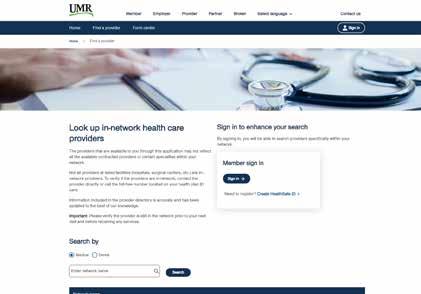
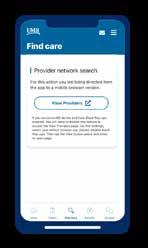
Go to umr.com and select Find a provider
Look for the name of your provider network on your ID card
Don’t have your ID card handy?
That’s OK. If you sign in to umr.com or the UMR app, you will be directed to your in-network provider listing.
Begin a search for your provider network using our alphabet navigation, or type the name into the Search box

Even for folks who try not to miss a daily walk, falling temperatures and shorter daylight hours can be tempting reasons to stay inside your warm, dry walls.
But just because it’s colder – and possibly dark – when it’s your scheduled walk time, try to avoid the temptation to stop moving.
We have a few tips to help you stay loyal to your daily walks, even when Old Man Winter is staring you in the face.


If you can arrange your schedule to walk in the daylight, that’s going to be better than a nighttime stroll. Sometimes that’s hard to do if it’s dark in the mornings and late afternoons. If you have to walk when it’s dark, plan a route that’s well-lit. If that’s not an option, carry a flashlight with you so you can see exactly where you’re going.
If you’re walking at dusk or after dark, wearing all dark colors can be very dangerous. Roads can be particularly hazardous in winter weather conditions when cars easily slide off the roadway. Add a layer of safety by wearing clothing that’s bright and easily seen by drivers.
Layering your clothes helps insulate your body while allowing heat to circulate throughout it. Wear an article of clothing that can absorb moisture next to your skin, such as cotton or a specialized moisture-wicking fabric. Then layer on, depending on how cold it is outside. If you’re taking a long walk and begin to heat up, shed layers as you go so you don’t overheat.



Gloves and a hat that covers your ears are essential –you want to avoid frostbite at all costs. A cozy, thick scarf can do wonders for keeping the freezing wind off your neck and face. If you have asthma, cold air may agitate your lungs. Wrap the scarf around your nose and mouth to help warm the air you breathe.
Make sure your footwear is warm, and wear the right kind of shoes or boots if it’s slushy, snowy or icy. Non-slip rubber soles are a good option for messy weather walking, and you might want to have a pair of tall boots with proper soles for when there are inches of snow.



Be prepared to step out into the elements by keeping your gear close to the door, ready to go. Have your scarf, hat, layers of clothing, gloves and footwear nearby. This may make the task of bundling up seem less daunting. And if you’re taking along others or your fur baby, make sure their gear is handy, too.
After a snowfall, take the time to shovel your own walkways and driveway. And if you’ve got a layer of ice underneath, salt the surfaces to melt away the slip hazards.
Stay aware of what’s going on with the weather. If you’re walking in snowy or icy conditions, try to stay on walkways that you’re confident are cleared – they’ve been shoveled, salted or are otherwise hazard free. Walking in snow where you can’t see exactly what’s underneath can lead to slips and falls, even if the surface isn’t necessarily slick. You might be stepping off a curb or onto an incline you can’t see. Stick to familiar walkways.
There are many malls that welcome walkers. Some even have markers posted inside to help track your distance. If you’re able to get yourself to an indoor walking area, that might be a lot safer than trying to walk outside. Indoor tracks are available at many fitness centers as well. And there’s always the trusty treadmill if you have access to one at home or at the gym.
Don’t let the weather elements keep you from your fitness routine. Just be prepared, aware and careful.
You may think the terms “preventive” and “diagnostic” mean the same thing – but they don’t. Here we explain how they’re different and why it can affect what you pay for health care.
Preventive care helps maintain your health – before you have symptoms. Preventive care includes tests or procedures intended to prevent or avoid illness or other health problems. For example:
• Routine wellness exams
• Screenings
• Immunizations
So, preventive care may be covered by most health plans with $0 out-ofpocket costs when you see an in-network provider.
Diagnostic care helps determine what’s wrong – when you already have symptoms or risk factors and your provider wants to diagnose them.
Generally, diagnostic care is more expensive than preventive care. Many plans share costs with you for diagnostic care.

rotation and brake inspection to catch
Think of diagnostic care as problem solving - taking your car in after it starts rattling or overheating, or when you have a flat tire.
It can be hard to know whether a service is preventive or diagnostic because the same type of care could fall into either category, depending on the situation.
For example, doctors routinely take your blood pressure when you see them for a sick or well visit. And that’s typically covered as preventive care at no cost. However, if you have risk factors for or a diagnosis of something like high blood pressure, it may be considered diagnostic.

Preventive care is routine health care that helps you stay on top of your health – and catch anything before it becomes serious.
Most health plans cover eligible preventive care services, which means you’ll pay $0 out of pocket.
Preventive care generally focuses on:
• Evaluating your health when you are symptom-free
• Receiving checkups and screenings
• Reducing the risk of future health issues

Diagnostic care addresses a “known or suspected” problem. And it may cost you more money. But many plans do cover part of the cost of diagnostic care.
Diagnostic care may include:
• Services other than routine care
• Certain tests, procedures, doctors and specialists
• Blood work and urine tests to diagnose symptoms
Since coverage can change depending on whether care is considered preventive or diagnostic, it’s important to understand the difference. So ask if a test is considered diagnostic before you receive care. Health plans cover preventive and diagnostic care differently. It’s important to know which services fall into each category so you can budget.
PRIMARY CARE:
If you visit your doctor for a
PRIMARY CARE:
If you visit your doctor because you wellness checkup. have a cough that isn’t getting better.
MAMMOGRAM:
If you have a routine mammogram
MAMMOGRAM:
If your doctor orders a mammogram to to screen for breast cancer. learn more about a lump that was found.
COLONOSCOPY:
If you have a routine colonoscopy
COLONOSCOPY:
If your doctor orders a colonoscopy but do not have symptoms. based on symptoms you’re having.
Before having a medical exam, test, screening or procedure, never be afraid to ask your doctor to explain why it is important, what it will show and what it will cost. They may be able to tell you whether it’s preventive or diagnostic, but you’ll need to consult your health plan to find out how much you may pay out of pocket.


As with your car, yearly checkups can reduce the risk of future health issues, even if you are in the best shape of your life.




Where you go for medical services can make a big difference in how much you pay and how long you wait to see a health care provider. Explore the following information to help you decide the appropriate setting for your care.
1 2 3 What you need to do:
Locate your member ID card
Find a provider
On your member ID card, you’ll find:
• Your PPO network
• Contact number
• Pharmacy contact, if applicable
You can also visit our website at umr.com.
Go to the CDC for the latest information on COVID-19, including vaccines, cases and data, how to protect yourself and what to do if you are sick.
Determine the severity of the symptoms and choose the provider that works for you.
If you are severely ill and/or it’s an emergency, call 911.
Retail clinics, sometimes called convenience care clinics, are located in retail stores, supermarkets and pharmacies. You can find over-the-counter medications, and you can talk to your pharmacist for help.
TIMES TO GO:
• Vaccinations or screenings
• Sinus infections
• Minor sprains, burns or rashes
• Headaches or sore throats
Expect to wait 15 minutes or less
Average cost $50-$100 (per service for non-employer sponsored facilities)
Urgent care centers, sometimes called walk-in clinics, are often open in the evenings and on weekends.
TIMES TO GO:
• Sprains and strains
• Sore throats
• Minor broken bones or cuts
• Minor burns
• Minor infections or rashes
• Earaches
Expect to wait 20-30 minutes
Average cost $150-$200 (for non-employer sponsored facilities)
(NOT URGENT)
Seeing your doctor is important. Your doctor knows your medical history and any ongoing health conditions.
TIMES TO GO:
• Preventive services and vaccinations
• Medical problems or symptoms that are not an immediate, serious threat to your health or life
Expect to wait 1 day to 1 week or more for an appointment
Average cost $100-$150
Visit the ER only if you are badly hurt. If you are not seriously ill or hurt, you could wait hours, and your health plan may not cover non-emergency ER visits.
TIMES TO GO:
• Sudden weakness, trouble talking or blurred vision
• Large open wounds
• Difficulty breathing
• Severe head injury
• Heavy bleeding
• Spinal injuries
• Chest pain
• Major burns
• Major broken bones
Expect to wait 3-12 hours (for non-critical cases)
Average cost $1,200-$1,500
Many of us wish we could build better habits, especially when it comes to our health. But just having a desire to do so isn’t enough motivation for most of us to follow through on the healthy habits we want to build. Luckily, there are some tried-and-true approaches that don’t require us to rely on willpower alone. Habit pairing or habit stacking could be the strategies that work for you.
Habit pairing is doing something you enjoy while completing a task you don’t enjoy. For example, when it comes to exercise, this could mean listening to your favorite podcast or audio book while going for a walk, or having a special TV show you only watch while on your exercise bike.
1. Identify an existing activity you enjoy.
Rather than pairing a new habit with a particular time and location, habit stacking involves piling a new behavior onto a current behavior. This makes you more likely to remember to do it and/or perform it with less mental effort.
2. Choose a task you don’t care to do or think to do but should.
3. Pair the task with the enjoyable activity.
This creates a positive trigger that will motivate you to do this new task. Repeat consistently to build a healthy pairing.
The idea behind habit pairing is you pair two activities to create a routine you’ll stick to. Some examples:



While I walk my dog –
I’ll practice my foreign language courses.
While I wait for my coffee to brew –
I’ll take my vitamins or medications.
While I’m listening to a work meeting –
I’ll walk on the treadmill.
While I scroll through my social media –
I’ll do neck stretches.
If I’m reaching for sweets –
I’ll balance it out with healthy fruit or protein.
Remember: There is no limit to your pairing possibilities.
Make a list of tasks you want to achieve and add them to a daily or weekly activity.
The idea behind habit stacking is taking something that’s already a ritual and adding a new activity to it. Some examples:
When it comes to habit pairing and stacking, it’s best to start small with mini habits that are easier to establish, then build upon them over time.
When I change out of my work clothes in the evening –
I’ll change into my workout gear so I’ll be more likely to exercise.
When I serve myself a meal –
I’ll put vegetables on my plate first.
For instance, if your goal is to run a 5k but running is not part of your current routine, you might start with something like, “After I clean up dinner, I’ll take a 20-minute walk.” You can slowly increase your activity but continue to tie it to dinner clean-up, the established habit.
When I put on my socks –
I’ll stretch my legs.
When I brush my teeth before bed –
I’ll also floss.
Remember: No matter what your health goals are, if you link a new habit to a favorite activity or an established behavior, you’ll be more likely to stick to it!
Halloween is a fun time for both kids and adults. It can, however, have some negatives, such as eating too much candy and the risk of injury while trick-or-treating. Follow these suggestions so you and your family can have a safe, healthy Halloween!


Be sure the path leading to your door is well-lit.

Keep pets in a closed room so they don’t try to run out when you open your door.
Clear the sidewalk and driveway of leaves and debris so children don’t slip and fall.
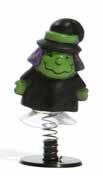
Trick-or-treating is something millions of children enjoy every Halloween. However, it can be a dangerous activity, especially in the dark. Here are a few ways to make the experience safer:
Stay on well-lit streets.
Use the sidewalk.
Add a few strips of reflective tape to a costume to help nighttime visibility.
Have a buddy system for young children.
Make sure masks are breathable and easy to see through.
Avoid accessories like swords that a child can trip and fall on.
Check that shoes fit well and are comfortable for walking.
Let children know they should never enter a house to receive candy.
Wear a glow-in-the-dark bracelet around each wrist.
Attach a small flashlight with a carabiner around a treat pail for a child to carry.
If trick-or-treating isn’t a safe or convenient option for children where you live, try one of these activities instead:
• Host a Halloween party.
• Attend a local trunk-or-treat.
• Have a family scary movie night.
• Create a spooky scavenger hunt.
• Go to a Halloween parade.
• Tell ghost stories around a campfire in your backyard.
• Carve jack-o’-lanterns.

If you want to be sensitive to those with allergies or sensory issues, consider giving away more than just candy. Here are a few healthy ideas:
• Glow-in-the-dark rings
• Bouncy balls
• Whistles
• Mini notebooks
• Small glider airplanes
• Finger puppets
• Creepy crawlies
• Wind-up toys

• Stickers
• Bubble bottles with wands
• Fake mustaches
• Crayons
• Pens and pencils
• Slap bracelets
• Mini flashlights
• Slime
Participating in the Teal Pumpkin Project is a way to be inclusive of children who have food allergies or intolerances. By putting a teal pumpkin on your doorstep, you indicate you have options other than candy. Place these non-food items in a separate bowl and help all children have a great Halloween experience.
Donate extra candy
Some local nursing homes or hospitals may accept candy to give to patients
Many dentists offer candy buyback programs, where kids can exchange collected candy for a toy.


Treats for Troops is a charity that partners with local businesses to collect candy to send to troops serving overseas.
Monthly health observances for FALL
OCTOBER
Global Handwashing
Health Literacy
Breast Cancer
NOVEMBER
American Diabetes
Great American Smokeout
Alzheimer’s
DECEMBER
Influenza
Vaccination
HIV and AIDS

Cold and flu season can be drag for anyone. And it can be especially stressful for people who have primary immunodeficiency disease or who are more vulnerable to respiratory illnesses like RSV or COVID-19. That’s why it’s important to protect both yourself and others. Here are a few tips:
According to the Centers for Disease Control and Prevention (CDC), proper hand washing is the most important thing you can do to keep from getting sick.
1. Wet your hands with clean running water and apply soap. Use warm water if it’s available.
2. Rub hands together to create a lather and scrub all surfaces.
3. Continue rubbing hands for 15-20 seconds. Need a timer? Imagine singing “Happy Birthday” twice to a friend.
4. Rinse well under running water.
5. Dry your hands using a paper towel or air dryer. If possible, use your paper towel to turn off the faucet.
When soap and water are not available, alcohol-based disposable hand wipes or gel sanitizers can be used.
• The level of alcohol in any hand sanitizer must be greater than 60% to be effective. Alcohol content between 60-95% is ideal.
• Alcohol is a natural antiseptic. It has been used in the medical field for more than 100 years because it kills most germs in seconds – without water – and evaporates quickly, leaving no residue on the skin. Alcohol destroys most germs.
If hands are visibly soiled, hand sanitizers will not work. In these cases, use soap and water. Washing with soap and water is better, but the ease and availability of hand sanitizer makes it a good first step in the fight against germs.
Your health care manager at your fingertips
Sign in to umr.com to see a personalized to-do list that highlights the steps YOU need to take to stay on top of your health and keep your benefits up to date. Personalization is based on your company’s health benefits plan and the programs you are eligible for.
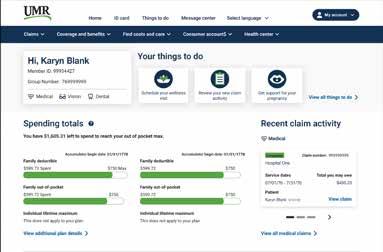
Your things to do may prompt you to:
• Review and complete health actions
• Provide/verify your email address
• Provide other insurance information
• Update security questions
• Review new claims
• Be promptly alerted to any denied claims
• Provide accident details
• Go paperless
• Get to know UMR
• Take your clinical health risk assessment (CHRA)
Visit umr.com today to take advantage of this time-saving feature!


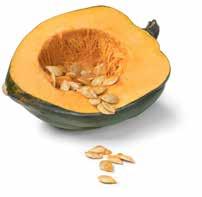
The Iroquois and the Cherokee called corn, beans and squash the “three sisters” because they nurture each other like family when planted together. This hearty vegetarian recipe features the trio in a comforting soup that’s sure to warm up you and your loved ones this fall.

Makes: 8 Servings
Directions
• Heat oil in a large pan on medium heat. Add carrot and onion and sauté until onions have begun to turn slightly brown, about 8 to 10 minutes.
• Add garlic, squash and corn and continue to stir for another 3 to 4 minutes.
• Add beans, tomatoes, broth, cumin and pepper.
• Allow soup to come to a boil, then turn heat down to a simmer until all vegetables are tender to taste (15 to 30 minutes, depending on the vegetables used).
Recipe courtesy of U.S. Department of Agriculture.
• 1 1/2 tablespoons vegetable oil
• 3/4 cup diced carrot
• 1 cup chopped onion
• 4 cloves minced garlic or 1 teaspoon garlic powder
• 2 cups diced summer or winter squash (fresh or frozen)
• 1 1/2 cups corn (fresh or frozen) or a 15-oz can (drained and rinsed)
• 1 1/2 cups cooked beans (any type) or a 15-oz can (low-sodium, drained and rinsed)
• 1 can (14.5 ounces) low-sodium diced tomatoes or 2 cups diced fresh
• 3 cups low-sodium broth (any type)
• 1 teaspoon cumin
• 1/4 teaspoon black pepper
For more healthy recipes, visit MyPlate Kitchen.

El sitio web Seguro para miembros umr.com esta disponible en español. 1 2 3
Simplemente, inicie sesión en umr.com con su nombre de usuario y contraseña.
Para obtener información de salud confinable, visite umr.com y seleccione Health education library (Biblioteca de educacion en salud).
Usted verá un menú desplegable en la parte superior de su pantalla de inicio con múltiples opciones de idiomas, que incluye español.
Seleccione la opción de español y verá como en su pantalla el contenido aparecerá traducido al español.
Para nuestros miembros de UMR que hablan español, los Institutos Nacionales de Salud (NIH por sus siglas en inglés) es un gran recurso para obtener información sobre temas de salud, desde alergias hasta Zika. Cada mes, el boletín electrónico destaca nuevos recursos para aquellos que hablan español, y sus amigos y familiares. Puede visitar el portal y suscribirse al boletín en salud.nih.gov

UMR is a third-party administrator (TPA), hired by your employer to help ensure your claims are administered correctly, so your health care costs can be kept to a minimum and you can focus on your health and well-being.
UMR is not an insurance company. Your employer pays the portion of your health care costs not paid by you.
UMR is a UnitedHealthcare company. © 2024 United HealthCare Services, Inc.